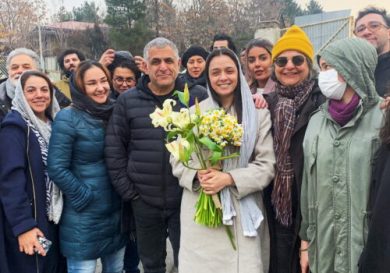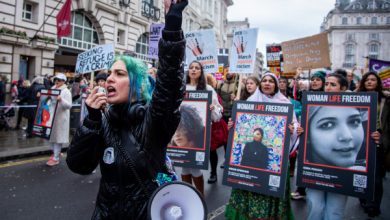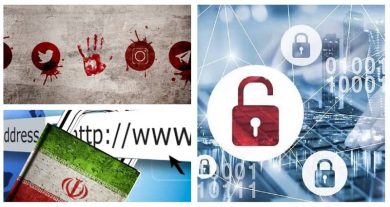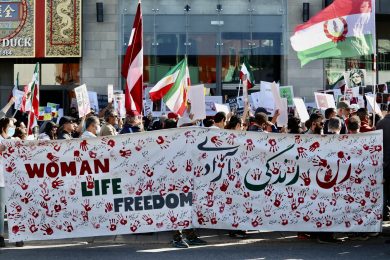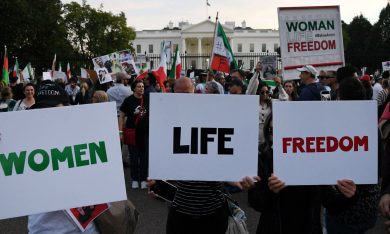Behind the Islamic Revolutionary Guard Corps’ military uniform lies something far more profitable than missiles or militias: money. Lots of it. Today, the IRGC is not just Iran’s most powerful armed force—it’s also the beating heart of one of the largest unregulated economies in the Middle East.
While the world knows the IRGC for its repression of protesters, torture of dissidents, and sponsorship of terror groups, few understand the sheer scale of its economic domination, both inside and beyond Iran. From construction and telecom to oil, mining, and finance, the IRGC’s business empire touches almost every sector of Iran’s economy—creating a state within a state, funded by corruption, opacity, and coercion.
This investigation maps that empire—uncovering how the IRGC uses economic control to reward loyalty, crush opposition, evade sanctions, and fuel its domestic and foreign operations. It also examines who profits—and who pays.
1. Khatam al-Anbiya: The IRGC’s Industrial Arm
At the center of the IRGC’s business web is Khatam al-Anbiya Construction Headquarters, established in 1990. Originally created to rebuild post-war Iran, Khatam has evolved into a sprawling conglomerate with over 800 subsidiaries, operating in construction, oil, gas, transport, and more.
Key Highlights:
• Controls billions in state-awarded contracts with no open tenders.
• Operates in sectors ranging from highway construction to energy pipelines and dam projects.
• Employs tens of thousands—often retired or active Basij and IRGC members.
• Sanctioned by the U.S. and EU, yet continues operating through shell companies.
It is the IRGC’s financial engine—pumping money back into military, cyber, and intelligence operations.
2. Oil, Gas, and Petrochemical Networks
Despite being under international sanctions, the IRGC profits heavily from Iran’s energy sector, often bypassing sanctions through complex laundering networks.
IRGC-linked Energy Operations Include:
• Front companies exporting oil to China, Syria, and Venezuela.
• Partnerships with sanctioned firms like Petropars and MAPNA.
• Revenues routed through offshore entities and currency exchange networks.
Funds from oil exports help sustain both domestic repression and the IRGC’s extraterritorial operations, including its proxy militias in Iraq, Syria, Lebanon, and Yemen.
3. Banking and Financial Channels
The IRGC uses Iran’s financial system to shield its operations and finance its activities—including illicit ones.
Key Institutions:
• Ansar Bank and Mehr Eqtesad Bank: Created by IRGC-affiliated organizations.
• Bank Mellat and Bank Saderat: Accused of processing transactions for IRGC front companies.
• Unofficial “hawala” networks and exchange shops used for laundering money.
Sanctioned entities often rename or restructure, re-entering markets under new identities. Some operate openly in neighboring countries, including Turkey and the UAE.
4. Telecom and Surveillance Infrastructure
The IRGC doesn’t just profit from telecom—it weaponizes it.
Through its control of the Mobin Trust Consortium, the IRGC owns significant shares in:
• Telecommunications Company of Iran (TCI)
• Mobile Telecommunication Company of Iran (MCI)
These networks provide more than cash:
• Enable mass surveillance of activists.
• Facilitate internet shutdowns and SMS tracking during protests.
• Partner with cyber units for monitoring dissidents abroad.
Telecom revenues and data serve dual purposes: funding the regime and silencing its critics.
5. Real Estate and Infrastructure
Through firms like Saba Construction and Fater Engineering, the IRGC controls major infrastructure and housing projects across Iran.
Examples:
• Urban development in Tehran and Mashhad.
• Military and strategic facility construction.
• Contract awards without oversight, often through the Supreme Leader’s office.
These companies benefit from land seizures, forced displacement (especially in minority regions), and unrestricted access to government budgets.
6. Mining, Manufacturing, and Heavy Industry
The IRGC’s grip also extends to:
• Steel and aluminum production.
• Rare earth mineral extraction.
• Cement factories and heavy machinery plants.
In regions like Khuzestan, Sistan-Baluchestan, and Kurdistan, IRGC-linked firms exploit natural resources while suppressing local populations, often under military guard.
7. Shipping, Ports, and Logistics
The IRGC’s global logistics are managed through:
• IRISL (Islamic Republic of Iran Shipping Lines).
• Port services under Kaveh Port and Maritime Co.
• Maritime operations in Bandar Abbas, a known IRGC stronghold.
Illicit Activities Include:
• Shipping arms to Hezbollah, Houthis, and other proxies.
• Masking oil shipments using fake flags and tracking manipulation.
• Smuggling goods and gold to evade sanctions.
These networks stretch into East Asia, Latin America, and Europe—linking oppression at home to terror abroad.
8. Cyber and Technology Fronts
IRGC-affiliated companies like Rahnama System, Aryan IC, and Fanap:
• Build surveillance systems for the regime.
• Create spyware used on mobile devices.
• Operate in gray zones of technology, such as facial recognition and digital forensics.
The same companies secure state cybersecurity contracts while conducting domestic censorship and foreign espionage.
9. Cultural Institutions and Media Fronts
The IRGC uses culture and media to shape public opinion, justify repression, and profit from ideology.
Assets Include:
• Tasnim News Agency and Fars News: State-run propaganda platforms.
• “Cultural foundations” and Islamic seminaries linked to economic and land holdings.
• Media production companies creating pro-regime films and documentaries.
These outlets amplify IRGC narratives while receiving state subsidies and advertisement revenues.
10. Who Profits?
The Winners:
• Top IRGC commanders and their families, many of whom hold shares or board positions.
• Clerics aligned with the Supreme Leader, rewarded with land and business access.
• Revolutionary loyalists in government ministries, often placed on company boards.
They enjoy wealth, influence, and immunity.
The Losers:
• Ordinary Iranians, whose economy suffers from:
• Mismanagement.
• Inflation.
• Lack of foreign investment.
• Ethnic minorities in resource-rich but neglected provinces.
• Political prisoners, whose arrests often coincide with land seizures or protests near IRGC project sites.
11. Global Enablers and Complicity
Despite sanctions, many IRGC-linked firms continue operating abroad through:
• Front companies in Europe, China, and the Gulf.
• Joint ventures and shell corporations that hide IRGC control.
• Western firms that unknowingly contract with IRGC affiliates due to poor vetting.
Financial institutions often fail to screen beneficial owners or trace entity lineage — allowing terror finance to persist.
12. How the IRGC Uses Its Empire to Crush Dissent
The economic empire is not just for enrichment — it is used as a tool of repression.
Examples:
• Protests near Khatam-run construction sites have led to arrests and crackdowns.
• Telecom firms provide data to security forces for mass detentions.
• Basij members are offered jobs in IRGC-owned firms in exchange for loyalty.
• Regions that resist regime control are denied infrastructure and economic opportunity.
Opposition is punished economically — a modern form of counterinsurgency masked as business.
13. The Cost to Iran’s People
While the IRGC thrives:
• Poverty and unemployment soar.
• Inflation has exceeded 40% in recent years.
• Currency collapse erodes public savings.
• Food, medicine, and housing become unaffordable.
All while the regime funds war in Syria, arms in Yemen, and militias across Iraq and Lebanon.
14. What Can Be Done?
To dismantle the IRGC’s financial grip, the international community must:
a. Designate the IRGC as a terrorist entity
(EU, UK, Canada, and others must follow the U.S.)
b. Sanction all known IRGC-controlled companies
Especially subsidiaries and joint ventures abroad.
c. Publish a global IRGC corporate registry
Track ownership structures and ultimate beneficiaries.
d. Target financial facilitators
Banks, law firms, and logistics companies involved in enabling IRGC-linked transactions.
e. Support civil society and whistleblowers
Back efforts to expose corruption and support Iranian labor organizers and activists.
Conclusion: Break the Business of Repression
The IRGC’s empire is not invisible—it’s simply ignored.
Its towers rise in Tehran while its operatives torture in Evin.
Its ships sail across oceans while its proxies fire rockets across borders.
Join Our Newsletter!
Stay informed with the latest updates, news, and ways to take action in the fight for justice and global security. Sign up now to get updates delivered straight to your inbox!

